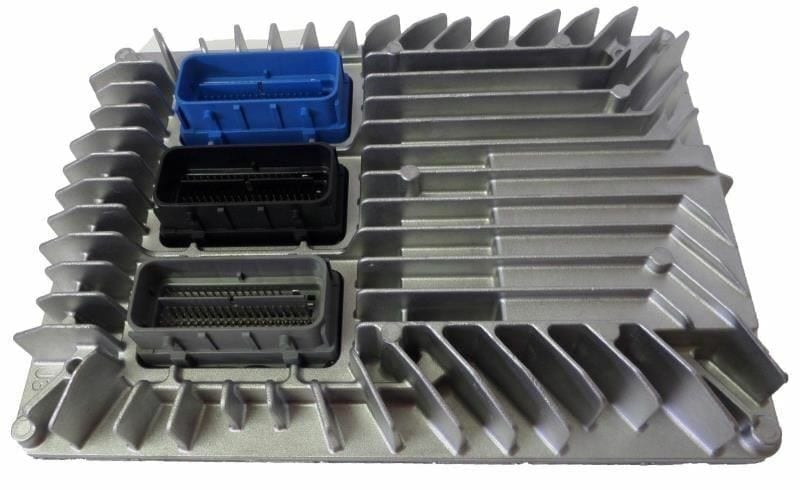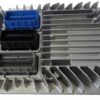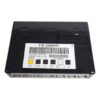Restore Peak Performance to Your GM Vehicle
Is your Buick Allure, Cadillac CTS, or Chevy Impala suffering from frustrating and unpredictable engine problems? A persistent Check Engine Light, sudden stalling, rough idling, or poor fuel economy can often be traced back to a failing Engine Control Module (ECM). As the central computer of your vehicle, the ECM is responsible for managing everything from fuel injection and ignition timing to transmission shifts. When it falters, the entire vehicle’s performance and reliability are compromised. This isn’t just an inconvenience; it can be a serious safety concern.
This replacement Engine Control Module, part number 12650256, is the definitive solution to restore your vehicle’s operational integrity. We take the guesswork and high dealership costs out of the equation. Before we ship your part, we will flash it with the very latest GM-certified software, specifically programmed to your vehicle’s unique VIN. This ensures perfect communication between the module and all other vehicle systems, just as the factory intended. You receive a component that is ready for installation, saving you hundreds in programming fees and diagnostic headaches.
Case Study: A Tricky Diagnosis
I recently had a 2011 Chevy Equinox in my bay with an intermittent no-start condition that was driving the owner crazy. They had already replaced the battery and alternator. The scan tool showed a loss of communication code (U0100) but no specific engine faults. After checking the wiring harness and grounds, which all looked pristine, my experience pointed toward the ECM itself. These modules can develop internal faults that don’t always throw a clear P-code like P0606. We installed one of our VIN-programmed ECMs, performed the security relearn, and the problem was solved instantly. The customer was thrilled to have their reliable daily driver back without an expensive, and in this case, unnecessary, trip to the dealership’s diagnostic department.
Common Signs of a Failing Engine Computer
If you’re experiencing any of the following issues, a faulty ECM could be the culprit. Replacing it can resolve these problems and prevent further damage to related components like your catalytic converter or transmission.
- ✔ Check Engine Light is illuminated, often with codes like P0601, P0606, or U0100.
- ✔ The engine cranks but refuses to start.
- ✔ Unexplained stalling or stumbling, especially when warm.
- ✔ Noticeable decrease in fuel efficiency.
- ✔ Harsh or erratic automatic transmission shifting.
- ✔ Misfires or a rough, unstable idle.
- ✔ Failure to pass an emissions inspection.
A Straightforward Guide to Installation
Installing your new 2010 Allure Engine Control Module is a manageable job for a confident DIYer. While the exact location varies slightly by model (see fitment list), the process is generally similar. Always consult a repair manual for your specific vehicle.
- Safety First: Disconnect the negative terminal from your vehicle’s battery to prevent any electrical shorts.
- Locate the ECM: On most of these vehicles, it’s found in the engine compartment, often on the driver’s side near the fuse box or attached to the air cleaner assembly.
- Disconnect Connectors: Carefully release the locking tabs on the large electrical harness connectors and pull them straight out from the module. Avoid pulling on the wires themselves.
- Remove the Module: Unbolt the old ECM from its mounting bracket. It’s typically held in place by a few small bolts.
- Install the New ECM: Mount your new, pre-programmed module in place and tighten the bolts. Reconnect the electrical connectors, ensuring they click securely into place.
- Reconnect Battery: Re-attach the negative battery terminal.
- Perform Security Relearn: Your vehicle will likely require a simple security relearn procedure to recognize the new ECM. This typically involves turning the key to the ‘ON’ position for 10-15 minutes, then off, and repeating two more times before starting the engine. This allows the anti-theft system to sync with the new module.
Verified Vehicle Compatibility
This ECM is a direct replacement for multiple part numbers, including 12616889, 12630908, 12637106, 12642665, 12650256, and 12651993. Please confirm your vehicle is on the list below. After purchase, you must provide your VIN so we can ensure perfect programming.
Buick LaCrosse: 2010-2011 (2.4L, 3.0L)
Buick Regal: 2011
Cadillac CTS: 2010-2012 (3.0L, 3.6L)
Cadillac SRX: 2010-2011 (3.0L)
Chevrolet Camaro: 2012 (3.6L)
Chevrolet Captiva Sport: 2012
Chevrolet Equinox: 2010-2011
Chevrolet Impala: 2012
Chevrolet Orlando: 2012-2013
GMC Terrain: 2010-2011
SAAB 9-5: 2010-2011 (2.0L)
Frequently Asked Questions
Frequently Asked Questions
Do I need to send you my VIN?
Yes, providing your Vehicle Identification Number (VIN) is mandatory. We use it to load the correct, vehicle-specific GM software onto the module before shipping, ensuring it works perfectly with your car’s options and systems.
Is any additional programming required after installation?
No dealership programming is needed. The only step you may need to perform is a security relearn procedure, which is a simple key-cycle process that you can do yourself in about 30 minutes. We include instructions for this.
Will this fix my Check Engine Light?
If the Check Engine Light is on due to an internal ECM failure (like codes P0601 or P0606), this part is the correct fix. However, you should always ensure other potential causes, like faulty sensors, have been ruled out first.
Is this a used part?
This is a high-quality, tested, and verified recycled OEM part. It is programmed with fresh, updated software to ensure reliability and performance that meets or exceeds the original factory standards.
Where is the ECM located on my 2010 Buick Allure?
On the 2010 Buick Allure, the Engine Control Module is typically located in the left (driver’s side) of the engine compartment, near the main fuse block.
What if I have a different part number on my old module?
This module directly replaces several part numbers, including 12616889, 12630908, 12637106, and others listed above. As long as your vehicle and engine match our fitment list, this module will work perfectly once programmed to your VIN.



